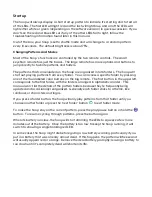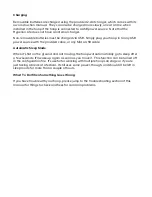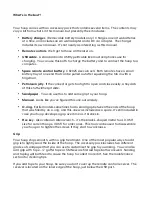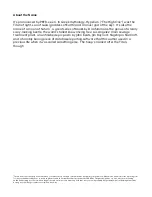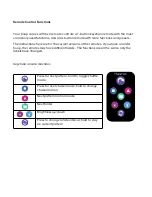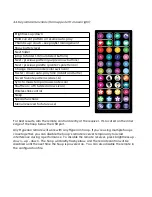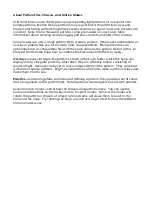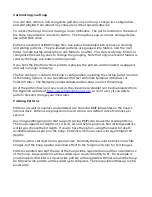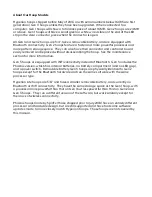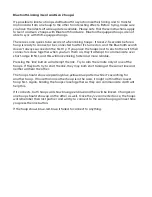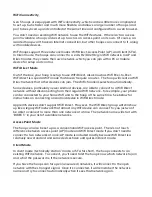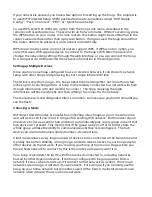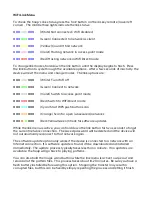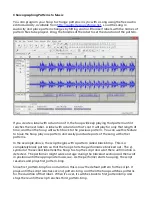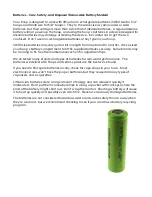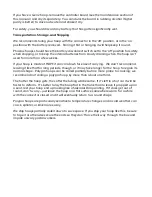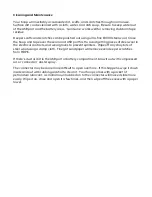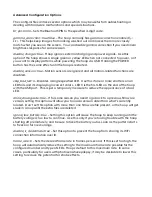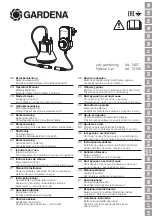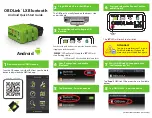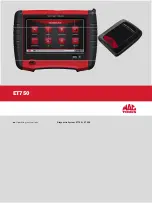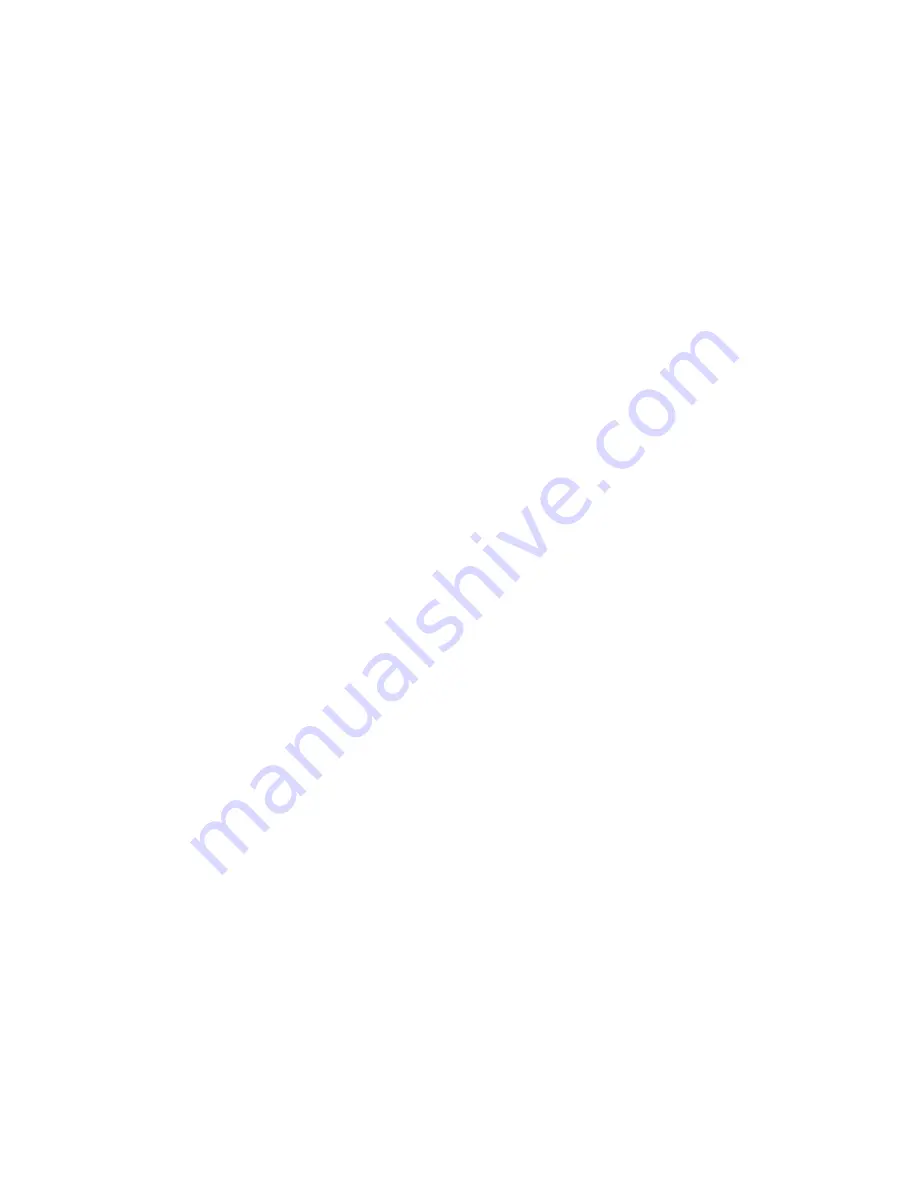
Art-Net™ Support (WiFi Hoops Only)
Art-Net is a network protocol for carrying DMX512 lighting data. Art-Net support is
enabled by default on your WiFi-equipped hoop. With it, you can use any modern lighting
control console or lighting design software to control it.
The DMX512 universe number and start address can be configured in the config.ini file or
through the web interface. The defaults are universe 0 and slot 1. Presently only a single
profile is defined, and the slots are assigned as follows:
1
Master brightness (0 = off, 255= max)
2
Pattern rotation rate (0 = ignore, 1 = max left, 128 = none, 255 = max right)
3
Overlay rotation rate (0 = ignore, 1 = max left, 128 = none, 255 = max right)
4
Pattern folder select (0 = ignore selection)
5
Pattern number selection within folder (0 = ignore selection)
6
Palette line number (0 = ignore)
7
Pattern line number (0 = ignore)
8
Mapped pattern selection (0 = ignore)
9-11
R/G/B values for palette substitution slot 1
…
54-56 R/G/B values for palette substitution slot 16
Settings in every slot except for master brightness are ignored if set to 0. The rotation
rates for the pattern and overlay layers are both centered at 128 (50%) for easy control
with a single knob or fader.
Patterns can be selected using the combination of slot 4 (folder select) and slot 5 (pattern
select). This is a simple way to access all of the patterns loaded on the device. To directly
access specific patterns, you can also use slot 8 to choose a pattern from a prepared list.
To use this feature, create a file on the hoop called 'dmx.ini' and add a line for each
pattern in the form 'pattern<n>=<filename.bmp>'. For example:
pattern1=my_first_pattern.bmp
pattern2=my_second_pattern.bmp
Slots 6 and 7 control the palette and pattern playback line number, respectively. In
normal operation the hoop will step through each line of the palette and pattern in
sequence, but these slots allow direct control of which lines are displayed. See the section
on advanced pattern customization for more information on how these can be used.
The rest of the slots represent the red, green, and blue intensity values for 16 color
substitution slots. These colors replace placeholder colors in the pattern.

